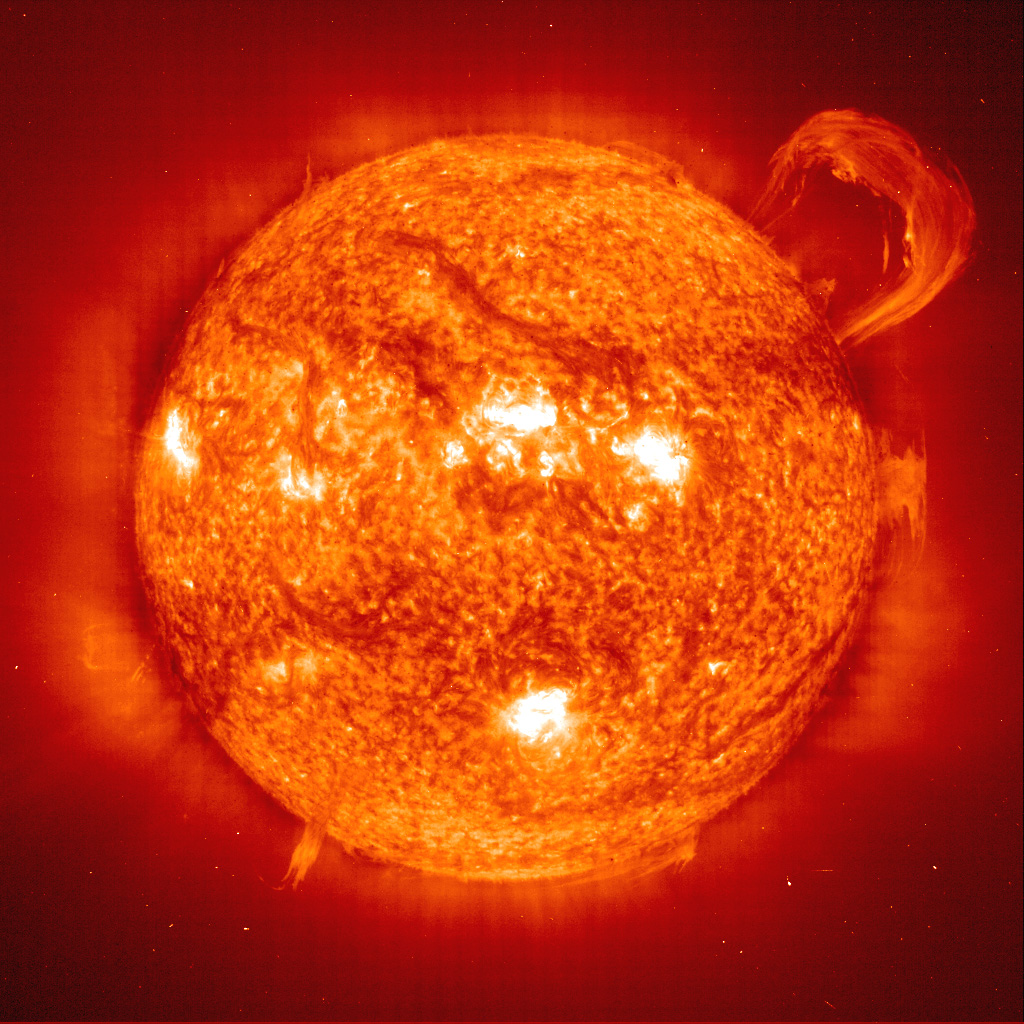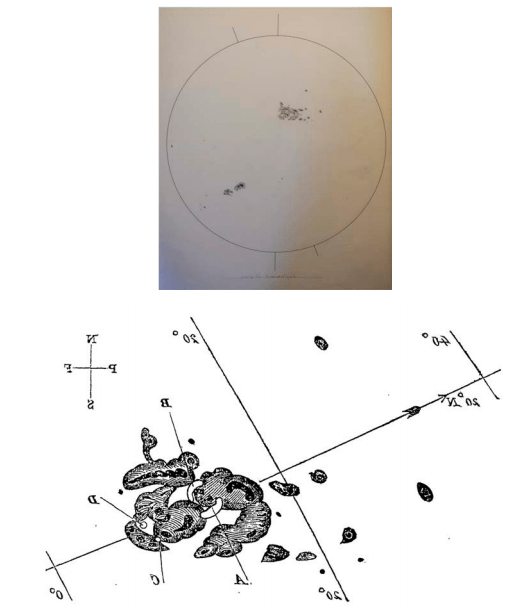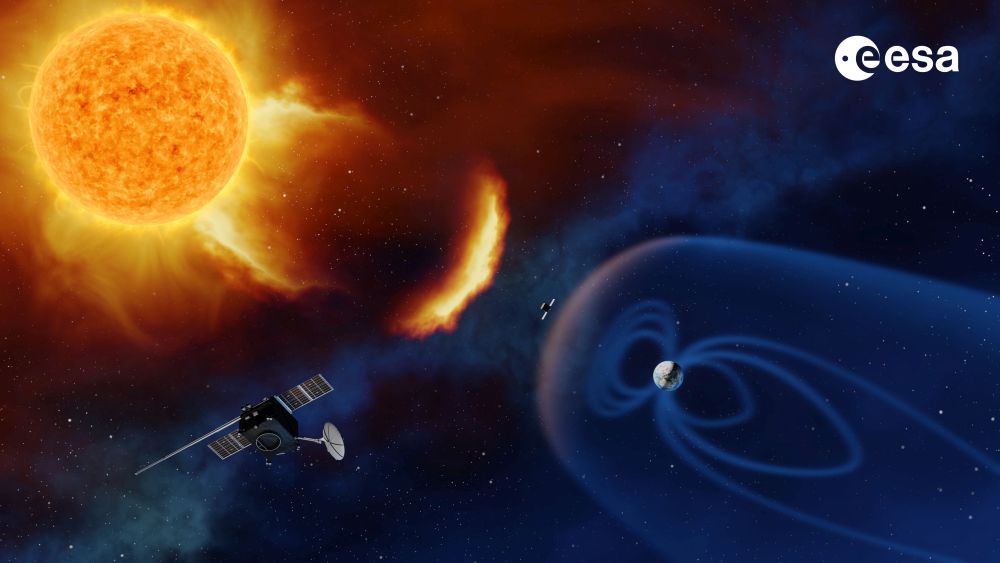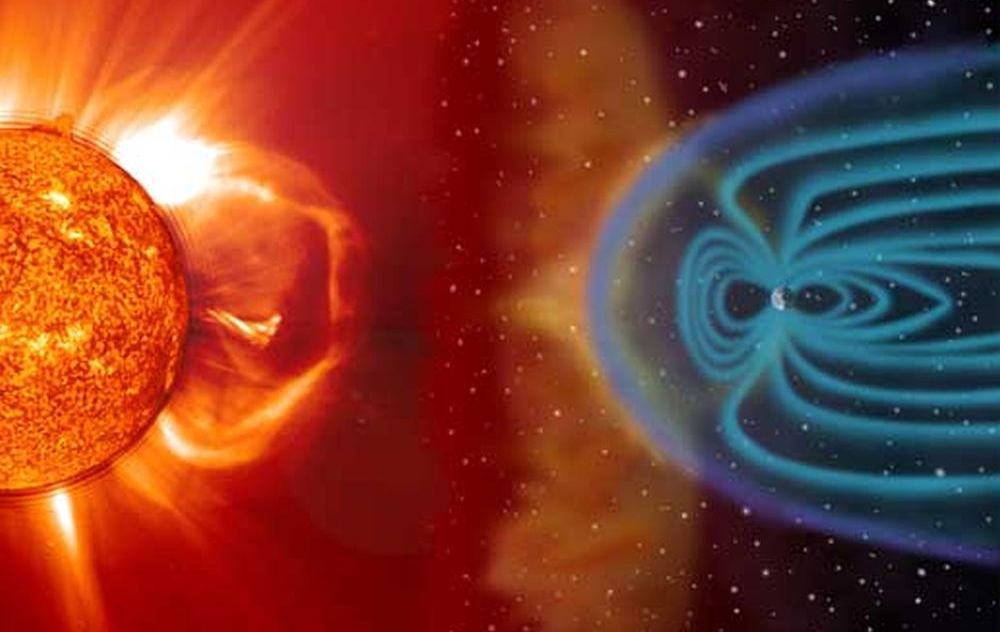Exactly how dangerous are solar storms? Scientists think the Carrington Event was one of the most powerful ones to ever hit Earth. They also think that storms that powerful only happen every couple centuries or so. But a new study says we can expect more storms equally as strong, and more often.
The Carrington Event was a massive coronal mass ejection (CME) that struck Earth on September 1st and 2nd, 1859. CMEs that powerful slam into the Earth’s magnetosphere, warping it and causing low-latitude auroras. The Solar Storm of 1859, as it’s also known, also caused telegraphs around the world to fail. It’s a well-known, well-studied and well-documented event.
But most of what we know about that storm comes from observations and reports from the Western Hemisphere. In a new study published in the American Geophysical Union’s journal Space Weather, scientists set out to gather reports and observations from around the world, to try to paint a more complete picture of the storm.

The lead author of the study is Hisashi Hayakawa, an astrophysicist at Osaka University in Osaka, Japan and Rutherford Appleton Laboratory in the United Kingdom. In a press release, Hayakawa said, “The Carrington Event was considered to be the worst-case scenario for space weather events against the modern civilization… but if it comes several times a century, we have to reconsider how to prepare against and mitigate that kind of space weather hazard.”
During a coronal mass ejection, a massive blob of plasma is emitted from the Sun’s outer atmosphere, or corona. They’re often preceded by solar flares, and are associated with groups of sunspots in active regions of the Sun’s surface. Usually the plasma is trapped by the Sun’s magnetism, but when the magnetic field lines are broken, the plasma can escape.
Our modern world is a lot more vulnerable to these storms than the world of 1859 was. Magnetic storms of that magnitude wreak havoc with our satellites, power grids, communications, and anything else that relies on electromagnetic waves. Hayakawa and his team wanted to know if we really understand how frequent and powerful these storms are.
The team of scientists organized an international collaboration to gather more data on the 1859 storm. They felt that since most of the data and observations were from the Western Hemisphere, there might be a gap in our understanding of the storm. They gathered historical observations and data on the auroras the storm caused from the Eastern Hemisphere and the Iberian Peninsula.
The team also collected reports from newspapers in Portugal, Spain, Australia, New Zealand, Mexico and Brazil. They also got observations of the storm’s auroras from the Russian Central Observatory, and from Japanese diaries. From the west, they had data from more newspapers, scientific journals, and even ship’s logs. They then compared the two bodies of reports.
Unpublished drawings made by European astronomers during the storm were another source. Those drawings allowed the scientists to find where the storm originated on the Sun’s surface, and to track the sunspot as it grew and shrank.

What Did They Find?
Their paper shows that the Carrington Event is not as unique as we thought.
The authors think that the sunspots that spawned the 1859 solar storm on September 1st and 2nd launched multiple other bursts. Those outbursts happened from early August to early October, and a solar storm happened in late August. The late August storm, according to the researchers, happened around August 27th 1859. It sent out separate CMEs strong enough to impact Earth’s magnetic field. They also think that the August 27th storm helped make the Carrington Event reach the intensity that it did.
After reconstructing all that activity, the authors compared the Carrington Event to other storms in 1872, 1909, 1921, and 1989. They found that two of them – in 1872 and 1921 – were comparable to this event. But the 1989 storm caused massive power outages in Quebec, Canada. The researchers concluded, logically, that the Carrington Event wasn’t the unique, powerful storm that we think it was.
According to Hayakawa, the implication is clear. “While the 1859 storm was certainly one of the most extreme events, this seems at best comparable to the 1872 storm and 1921 storm in terms of its intensity,” he said. “So, the Carrington event is no longer something unique. This fact may require us to reconsider the occurrence frequency of this kind of ‘worst-case scenario’ of space weather events.”
We are increasingly more vulnerable to these coronal mass ejections. We know a lot more about their source and frequency, and their effects, than we did in 1859. But are we more prepared?
For now, most of the preparation for solar storms lies in accurate forecasting. Knowing when one is coming allows everybody from the International Space Station astronauts to power transmission utilities to respond.
There are a variety of ways to protect things like transmission lines form intense solar storms. Capacitor banks, Faraday cages, and special dampening devices could all help. But none of them are a perfect solution, and one 2017 study suggested it could cost up to $30 billion dollars just to protect the power-grid in the USA.

Some scientists have floated the idea of a massive magnetic shield between the Earth and the Sun. Sitting at the Earth-Sun LaGrange Point 1, the shield would offer the same type of protection that the Earth’s magnetic field already does, but more of it. But that’s just an idea at this point.
In the mean time, the best bet is to know when a storm is coming and to shut down the power system in hopes of minimizing the damage. Future missions like the ESA’s LaGrange Mission might help with that. As far as satellites and communication systems go, protecting them is a work in progress, and nobody seems to have an answer, yet.
More:
- Research Paper: Temporal and Spatial Evolutions of a Large Sunspot Group and Great Auroral Storms around the Carrington Event in 1859
- Press Release: Extreme solar storms may be more frequent than previously thought
- Report: Protecting America’s Electric Grid Against Solar Geomagnetic Disturbances
- Universe Today: New Study Proposes a Giant, Space-Based Solar Flare Shield for Earth


It’s creepy that we are heading into a period of low sun spot activity for an extended period of time and yet everybody and their brother are talking about these massive CME’s and Solar flares as if every single one of them is in direct line with Earth to scorch the living hell out of us. Even if every CME ever created is on plane with Earth, the chance that we will be directly impacted again is very very (and did I say very?) low.
What can we do to prevent disaster on the next huge CME event? Money says have new satellites ready to launch after the event. Why waste trillions on satellites that might never be hit by a CME in their life times? It would be much more economically feasible just to replace satellites at a moments notice. Have satellites prepped and ready to be loaded onto launch vehicles after the next CME. I mean really. We have some satellites that are functioning from the early days of space. In our lifetimes, the chances of a CME hitting us is just too slim to create hardened satellites for that event.